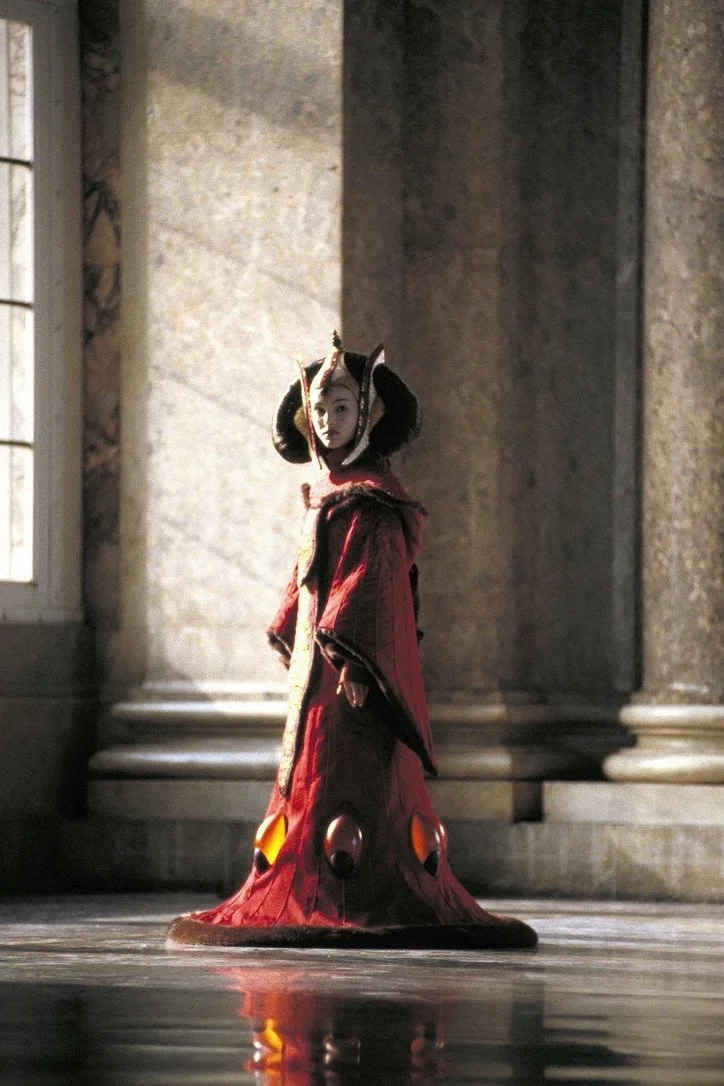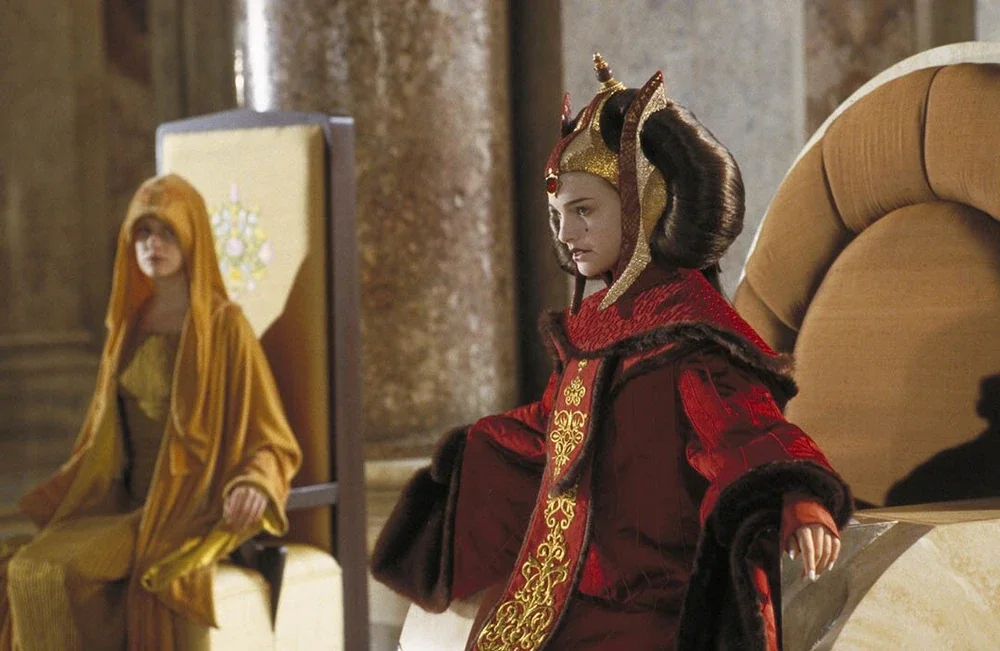Writing the Quiet Power of Padmé Amidala in The Phantom Menace
In Star Wars: Episode I – The Phantom Menace (1999), Natalie Portman’s portrayal of Queen Padmé Amidala is a masterclass in controlled presence. In one particular frame, she sits draped in layers of ornate silk, framed by the opulence of Naboo’s royal court.
The costume catches the light — its intricate textures and jewel tones a symbol of status — but it’s her stillness, not her attire, that commands attention.
This is the kind of moment that screenwriters and storytellers can learn from: a scene where the power doesn’t come from movement, dialogue, or spectacle, but from the choice to hold still.
The Writing Behind the Frame
On the page, a moment like this isn’t just “Padmé sits in the throne room.” It’s about the intention layered into her stillness. The writing gives her the space to exist in the frame as both a leader and a strategist. She isn’t idle; she’s calculating. The costume design, lighting, and camera work all reinforce her position, but it’s her expression — a subtle tightening of the jaw, a gaze that refuses to yield — that does the heavy lifting for the scene’s subtext.
In film, this is called “playing the moment between the lines.” On the page, you might describe it as:
She says nothing. She doesn’t need to. The room waits for her to move first.
That line alone can signal a writer’s understanding that action isn’t always about motion.
Why It Works
Padmé’s quiet resolve here isn’t an isolated choice — it’s the seed of her entire arc across the prequels. She is a young queen in a galaxy balanced on the edge of war, forced to navigate impossible political pressures without surrendering her moral center. In this moment, the writing uses stillness as both a political strategy and a character revelation.
Even without knowing her ultimate fate, the audience can read her. They see the steel beneath the silk, the strategy behind her patience. This is diplomacy in its purest form — choosing the pause over the provocation, letting others underestimate you until you decide it’s time to act.
And here’s where it becomes a writing lesson: characters don’t need to raise their voices, brandish a weapon, or dominate the dialogue to command a scene. Authority can be built in the spaces between lines, in the way others shift uneasily under their gaze. Some of the most compelling choices you can make as a storyteller come from letting your character remain still — forcing the world around them to move first.
For Writers
Use Stillness as Action
Stillness isn’t the absence of movement — it’s a choice. Decide exactly what your character is communicating by not moving. Is it defiance? Calculation? Contempt? In Padmé’s case, her stillness is strategic; it forces others to reveal themselves first. On the page, a single beat of inaction can carry the same weight as a dramatic entrance — if it’s intentional.
Make the Environment Work for You
Every visual element should echo the character’s internal state. Costume, set design, and lighting aren’t just aesthetic; they’re story tools. Padmé’s ornate gown and the throne room’s grandeur heighten her regal presence and hint at the political weight she carries. Whether you’re writing a screenplay or prose, choose details that reinforce mood and meaning — let the setting act as a silent ally to your character’s presence.
Trust the Subtext
Resist the urge to fill the silence with explanation. Let the audience do some of the work. Subtext draws them in and makes them active participants in the scene. In The Phantom Menace, the camera doesn’t tell us Padmé is in control — it shows us through composition, reaction shots, and her unwavering gaze. On the page, you can achieve this by describing what isn’t being said, and how other characters respond to it.
Final Frame
In the right hands, silence is not absence, it’s strategy. Give your characters the kind of presence that can win a scene before they speak, and you’ll give your audience something they can’t look away from.


